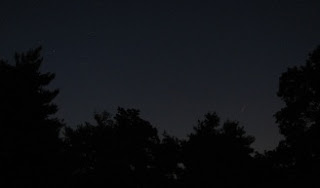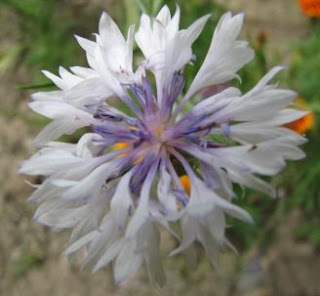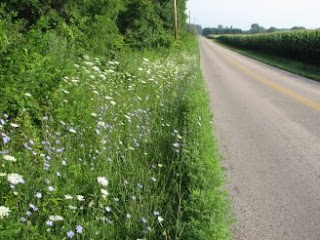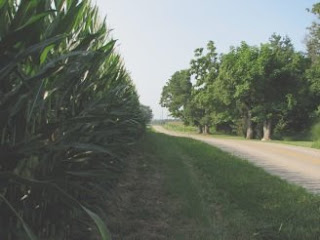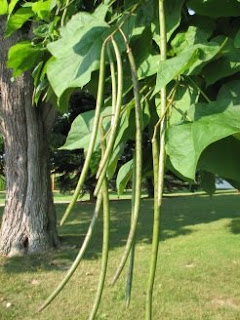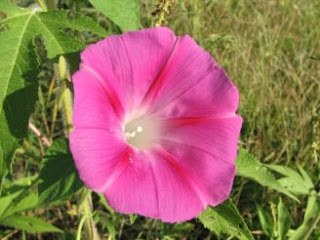
These are so common that I equally marvel that packets of their seeds are sold each year. Actually, somewhat of a tropical plant, they originally were found in home gardens. But they soon make a break for it and are happy giving color to roadside ditches. In our case, this is a vine with nowhere to twine and so they grow up the sides of other weeds and grasses and show their color from down low. Still, I cannot pass these that I don't admire their choice to go it alone.
Another "weed" which is now coming into full bloom is ironweed, given the name for the strength of its stem. Once used for treating stomach ailments, the plant is named for an English botanist, William Vernon (the scientific name of the plant is Vernonia altissima). The plant itself is tall and gangly but the flower, once it erupts, is a royal purple/pink and waves alongside Clayton Road in profusion. It slightly beats goldenrod to the task and it is far showier in its bloom.
Above is the Canada Thistle, a flower I photograph every fall simply because I cannot help myself. I say I will not do it again and then I'm taken by the delicate pink bloom and can't help myself. I love the delicate fringing pink, the tiny filaments, the puff of purple. This flower, also blooming beside Clayton Road just now, has what appears to be a green beetle enjoying the view. I had stopped not so much for the beetle but for a bumblebee that was working on the sunlit side. But as I approached with the camera and my shadow overspread the bloom, the bee took flight. The beetle didn't seem to be bothered by me at all and thus he, not to the bee, made his way onto the Internet. It's amazing how chance plays out.
Finally, here I am enjoying a slice of pumpkin pie in our dining room. On Thursday, when I took my father for his second cataract operation, my mother made homemade pie crust and turned out a nice pumpkin pie. It's a seasonal treat for us - we wouldn't think of having this in the spring - but I look forward to its taste in the fall.
 And so you should enjoy a close-up view - just as you do with my blooms - because pumpkin pie is equally enjoyable to the flowers. A little whipped cream, a steaming hot cup of strong, black coffee, and I couldn't be happier.
And so you should enjoy a close-up view - just as you do with my blooms - because pumpkin pie is equally enjoyable to the flowers. A little whipped cream, a steaming hot cup of strong, black coffee, and I couldn't be happier.
Isn't approaching autumn as exciting as spring? We have the cold winter nights and the snow to look forward to, as fine a time to me as any other. It is the change I love most and this temperate climate couldn't be better.











